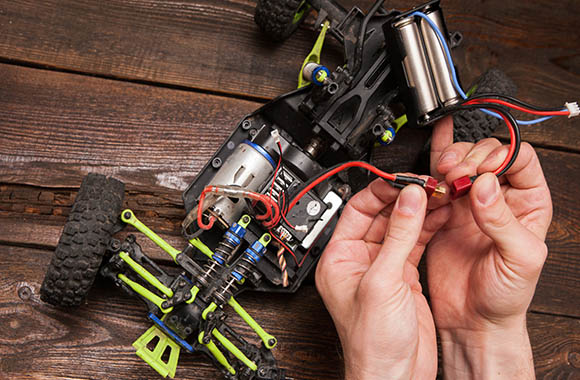
RC model making
2023年 7月 28日0
Radio-controlled (RC) model making is a popular hobby that involves building and operating miniature vehicles or aircraft using remote control systems. RC models can be planes, helicopters, cars, boats, or even drones. Here are some tips and advice for getting started with RC model making:
- Choose your RC model type: Start by deciding which type of RC model interests you the most. Each type (aircraft, car, boat, etc.) has its unique characteristics and challenges. As a beginner, you may want to start with an easier option, such as an RC car or boat, before moving on to more complex models like planes or helicopters.
- Research and select a model: Look for a beginner-friendly model or kit that matches your skill level and interests. Ready-to-run (RTR) or almost-ready-to-fly (ARF) models are recommended for beginners, as they require minimal assembly and setup.
- Understand the components: Familiarize yourself with the essential parts of an RC model, such as the transmitter, receiver, motor, servos, speed controller, and batteries. Knowing the purpose and function of each component will help you in assembling, maintaining, and troubleshooting your RC model.
- Learn basic controls: Understand how to operate your RC model using the transmitter. Practice steering, throttle control, and other essential maneuvers to gain confidence and improve your skills.
- Maintenance and repairs: Proper care and maintenance will extend the life of your RC model. Regularly inspect your model for wear and tear, clean it after use, and replace damaged or worn-out parts as needed. Learn basic repair skills to keep your model running smoothly.
- Safety first: Always follow safety guidelines when operating RC models. Avoid flying or driving near people, animals, or property that could be damaged. Be aware of local regulations regarding the use of RC models in public spaces.
- Join a club or community: Connect with other RC enthusiasts in your area or online to share tips, learn from others’ experiences, and enjoy the hobby together. Local clubs often have dedicated spaces for flying or driving RC models, and they may host events or competitions.
- Upgrade and customize: As you gain experience, consider upgrading or customizing your RC model with new parts or accessories to improve its performance or appearance. This can be a rewarding aspect of the hobby and allows you to personalize your model to your preferences.
- Practice, practice, practice: Like any skill, mastering RC model operation takes time and practice. Be patient and enjoy the learning process. As your skills improve, you may want to challenge yourself with more advanced models or even try building your own custom RC model from scratch.
- Have fun: Remember that RC model making is a hobby meant to be enjoyed. Embrace the challenges and learning experiences it offers, and most importantly, have fun while exploring the exciting world of radio-controlled models.





0 commentaires
Écrire un commentaire